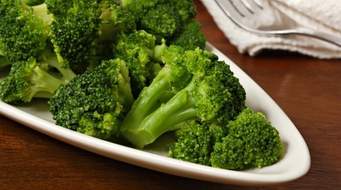There are some recommendations from our Head of Oncology department, Dr. Turobova Tatiana, MD
Many women believe that understanding nutrition and eating healthier is an important step in their recovery and for lowering the risk of breast cancer recurrence.
Both weight loss and a low-fat diet are important in lowering the risk of breast cancer recurrence. A low-fat diet may also lower the risk of heart disease and may help achieve weight loss.
Tips to help women with Breast Cancer to make good food choices:
1. Eat a low-fat diet and plant diet rich in vegetables, fruits, beans and variety of whole grains (barley, brown rice, oats and wild rice).


This diet is rich in fibre, vitamins and dietary compounds those reduce the risk of developing cancer. Most plant foods are also naturally low in calories and fat which can be helpful for managing weight.
Note! A plant-based diet does not mean that foods from animals need to be eliminated. A plant-based diet can include dairy products and meat, fish and poultry but less often and in smaller portions.
2. Choose sensible portion sizes. You might already be eating the right foods, but it could be that you’re eating too much. Occasionally measure the amount of food you serve yourself, pay special attention and limit high calorie foods such as high fat meats, fried foods, desserts and added fats.
3. Limit the amount of liquid calories from coffee beverages and sweetened drinks like iced tea and fruit-flavoured drinks.
4. Love everything you eat. Make sure that when you do indulge in a treat that it’s worthy of the calories.
5. Keeping a diary is a proven methods to increase success with eating healthier (such as increasing your intake of fruits and vegetables) or losing weight. A diary involves writing down to keep track of everything you eat and drink daily or on select days.
6. Remember that some fat is healthy. Recommended to include a small amount (30-45 ml or 2-3 table spoons) of unsaturated fats each day. This includes oil used for cooking and salad dressings. Vegetable oils such as olive and soybean are low in saturated fats. This amount of added fat is suggested for overall good health. Vegetable oils are a better choice than hard fats such as butter. Even in baking, oil is a better choice. The “Extra virgin” oil is particularly tasty with salads.

7. Eat at least one dark green (broccoli, lettuce, spinach etc.) and one orange (carrot or sweet potato) vegetable each day.


8. Enjoy vegetables steamed or baked instead of deep-fried.
9. Have vegetables and fruit more often than juice.
10. Choose products that are lower in fat, sugar or salt. When adding sauces, use small amounts.
11. Drink 1% or 2% milk each day. Have 500 ml (2 cups) of milk every day for adequate vitamin D. Drink fortified soy beverages if you do not drink milk. Select lower fat milk alternatives: yogurts or cheeses.
12. Choose fish such us mackerel, salmon, sardines.

13. Try lower-fat recipes. Today’s low-fat cookbooks describe many ways to cook using little or no fat. These books provide lower fat recipes for many traditional dishes. Most of them also have a section at the beginning explaining how to eat less fat.
14. Choose lower fat meals away from home too:
• Check out the menu to help you make a healthier choice. More restaurants have their menus online and are also serving “heart healthy” meals which may be lower in fat. Before ordering take some time to look at the description on the menu and ask your server for more information about how the food is prepared.
• Ask if vegetables or main dishes can be served without salad dressings or sauces, or on the side and use them sparingly. The same for condiments such as butter, mayonnaise, cheese or sour cream.
• Choose lower fat side dishes such as simply prepared vegetables and salads rather than French fries or onion rings.
• If portions are large, consider an appetizer as your main entree, share a main entree or take some home.
• Avoid buffets if you find you usually overeat when there are so many choices.






